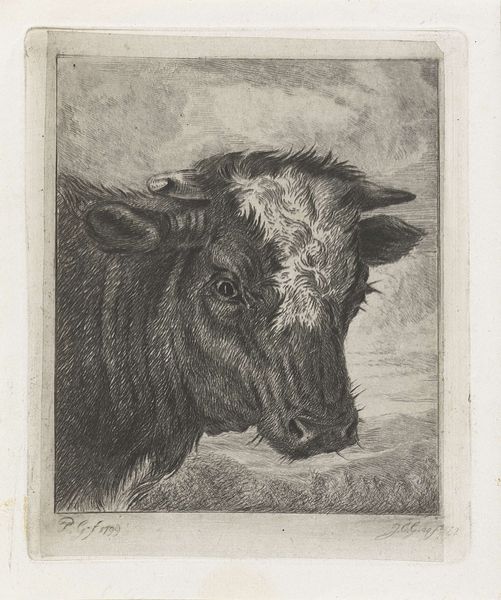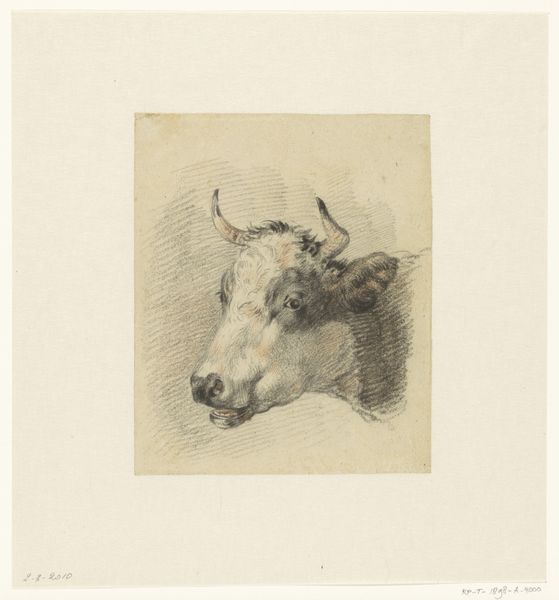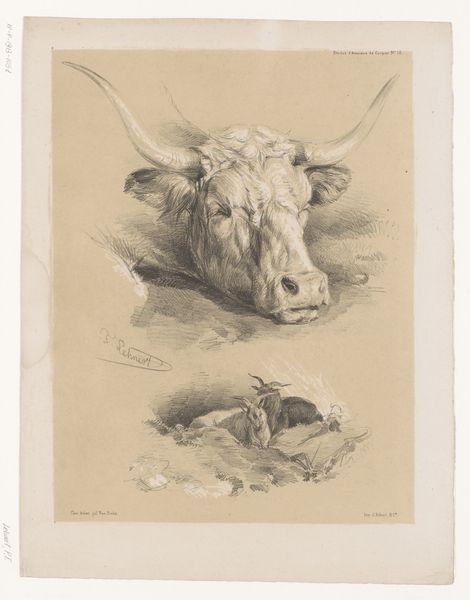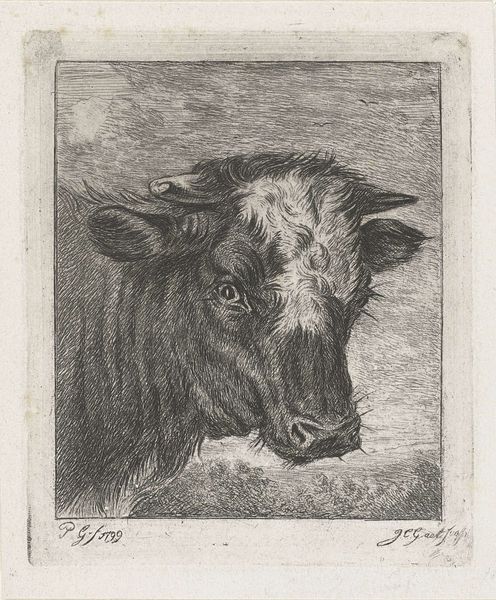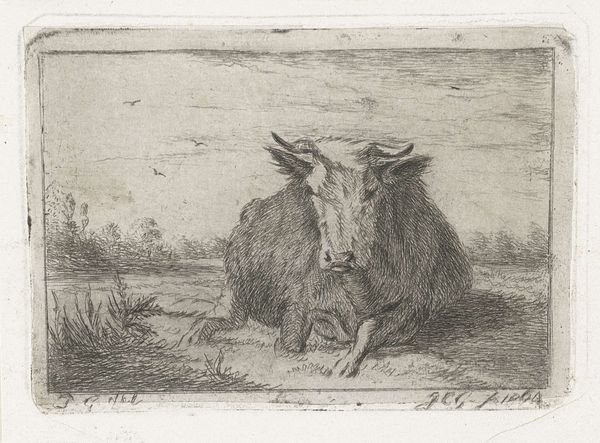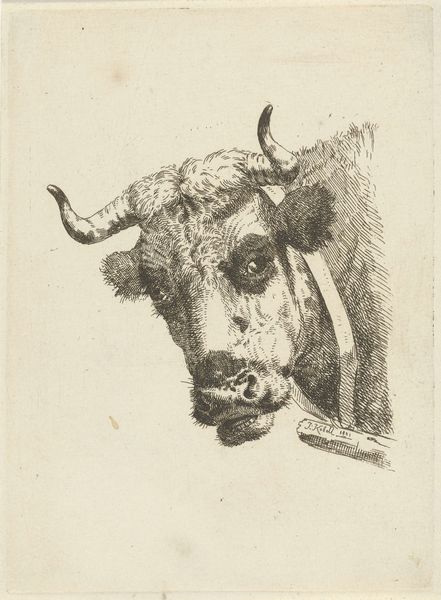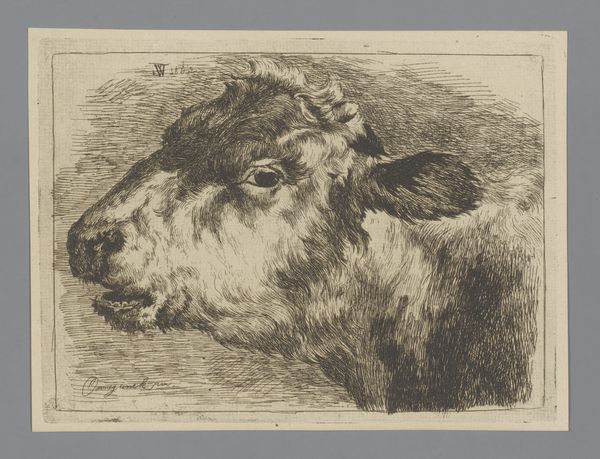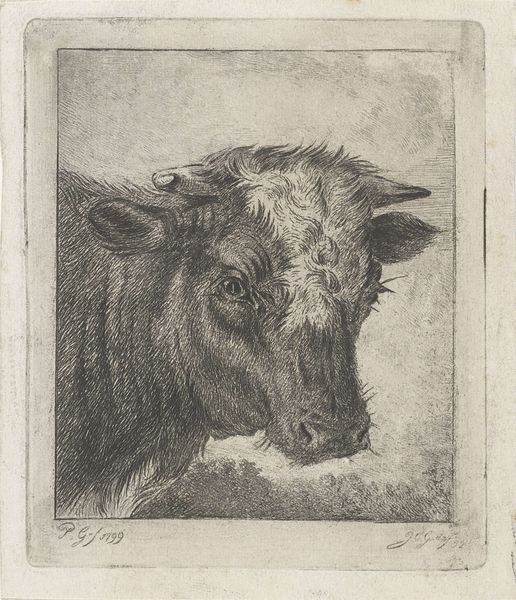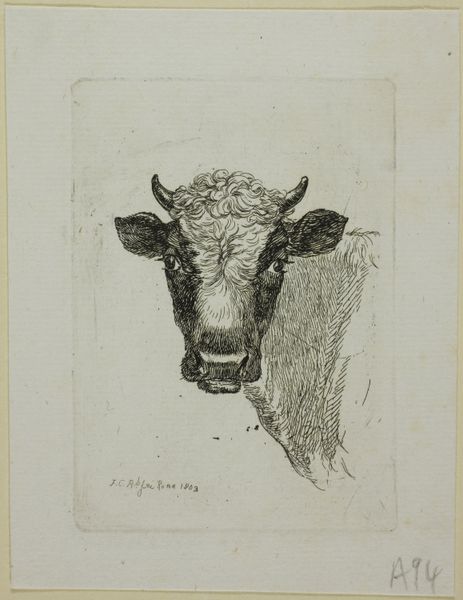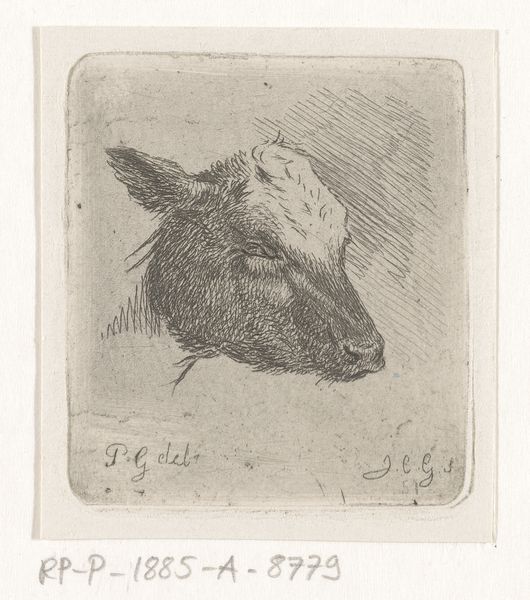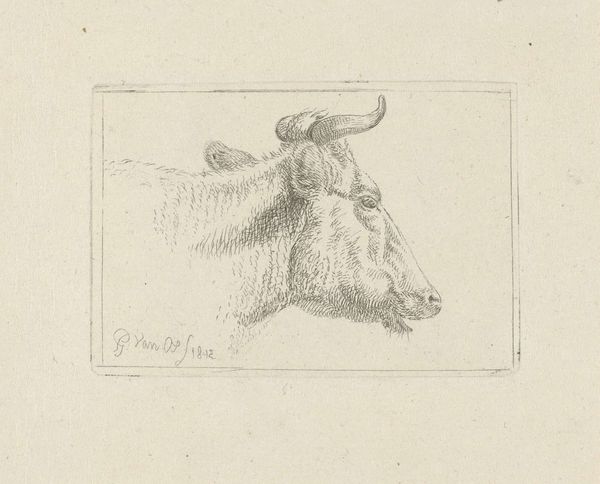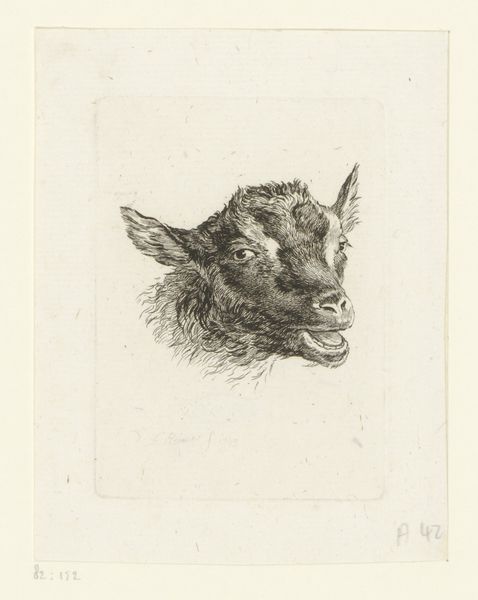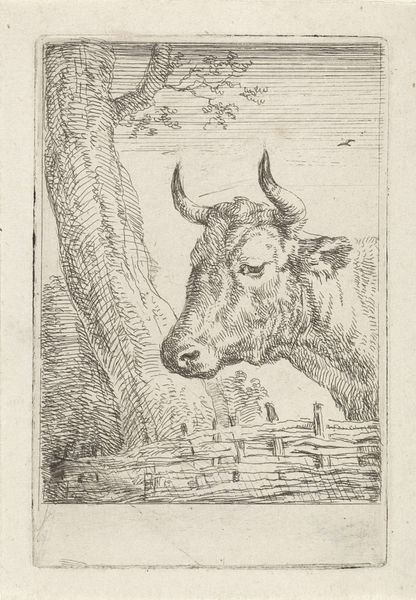
print, etching
#
animal
#
dutch-golden-age
# print
#
etching
#
landscape
#
realism
Dimensions: height 113 mm, width 92 mm
Copyright: Rijks Museum: Open Domain
Jacobus Cornelis Gaal created this etching of a cow’s head sometime in the first half of the 19th century. Look closely and you'll see the characteristic qualities of the etching process. Gaal would have coated a metal plate with wax, then drawn into it with a sharp needle. This exposed the metal, which was then submerged in acid. The longer it was left in the acid, the deeper the lines would be etched. After removing the wax, the plate would be inked and used to make prints on paper like this one. Etching allowed artists to create multiple nearly identical images easily, making art more widely available. It reflects the development of a more industrialized society, where processes are broken down into steps and where reproducibility became highly valued. In this way, even a simple portrait of livestock can evoke larger issues of labor, politics, and consumption.
Comments
No comments
Be the first to comment and join the conversation on the ultimate creative platform.
